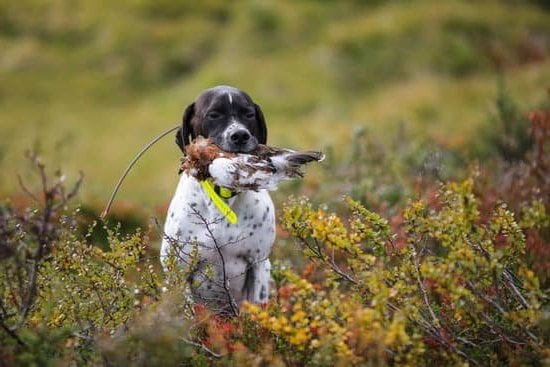Introduction
Yes, it is possible to train a dog to not chase cats. Training a dog to stop chasing cats involves an understanding of the dog’s natural predatory instincts and finding ways to distract and redirect the instinctive behavior away from chasing cats. This process typically relies on positive reinforcement methods, such as providing treats or praise when the dog listens and responds to commands not to chase cats. The goal is not only for their safety but also to help them understand that it’s not appropriate or necessary behavior.
Training Methods: There are several methods which can be used in order to train a dog not to chase cats. These include showing the pet that chasing cats can lead to unpleasant situations (such as hissing) or unpleasant consequences (such as a firm ‘No!’), teaching the pet specific commands (“Sit” or “Stay”), providing rewards for obedience, creating distractions instead of allowing them pursuit time with cats through games like tug-of-war, or using leashes or cages if necessary.
Consistency: As with most behaviors, consistency is key when training a dog not to chase cats. It’s important to remember that these goals won’t be achieved overnight; they take patience and effort. The more consistent you are in praising good behaviors, listening attentively and responding quickly in order to make corrections, the sooner will your pup learn what behavior is expected of him around other animals. Additionally, taking your pup on regular walks and outing will help reduce pent up energy which might otherwise manifest itself into unruly behaviors over time.
Conclusion: By understanding your pup’s natural curiosity about felines and redirecting their desire for excitement away from acts of hunting smaller creatures like cats, you can successfully teach your pup not be chase them by utilizing positive reinforcement techniques outlined above. With patience and practice, eventually your pup should grow out of this instinctive hunter-like behavioral tendency towards other animals in no time
Understanding the Benefits of Training Your Dog to Not Chase Cats
Training a dog to not chase cats may have benefits beyond improving the relationship between cats and dogs. Knowing that your dog will not run after cats can give you peace of mind, since you can trust that your pet won’t be chasing cats down the street or going after them in an unfriendly manner. Teaching your dog to remain calm around cats can also make taking your pet out on walks more enjoyable, as you won’t need to constantly worry about their behavior around other animals.
Furthermore, training a dog not to chase cats can also help improve their overall obedience to commands. If your dog is conditioned to respond positively in the presence of another animal such as a cat, even if it is instinctual for them to go off running in pursuit, then it will likely be easier for them to respond positively to other commands like sit and stay. Training a dog this way helps ensure that they have better control over their impulses in all situations – something which all owners should strive for when training their pets.
Identifying Typical Challenged When Training Dogs to Not Chase Cats
When training a dog to not chase cats, owners face several common challenges. One of the greatest is teaching canine impulse control. Dogs often have an instinctive drive to chase fast-moving objects and animals, especially if they are small and furry. As such, it can prove difficult for some dogs to look away from a cat or confidently walk away without chasing it. Additionally, in some cases territorial aggression towards cats may need to be addressed. Such aggressive behavior may be motivated by the dog perceiving the cat as a threat or even simply as competition for attention and resources in their home environment. Even though puppies typically do well with socialization, adult dogs may present greater difficulties in terms of learning not to chase cats due to these ingrained tendencies. Finally, owners will need to come up with strategies that ensure their cats’ safety while ensuring that the dog can become accustomed to their presence at a distance over time.
Utilizing Prevention Strategies for Optimal Results
Yes, it is possible to train a dog not to chase cats. First, you must ensure that your dog has been given all the necessary vaccinations and neutered or spayed if needed. Then, establish trust between yourself and your dog by providing positive reinforcement when it behaves correctly or follows your commands. You can also use leash training to increase control of your dog as it moves around the house and outdoors. Additionally, socialization is important in helping your canine recognize cats as non-threatening animals, despite any natural chase instinct. Consider utilizing toys and treats during playtime with cats present in order to gently reinforce familiarity and decrease fear of cats for your pup. Lastly, employ prevention strategies such as verbal corrections or blocking access to areas where cats may be present when necessary in order to further discourage chasing behaviors between cats and dogs. With patience and dedication, you can successfully train a dog not to chase cats for optimal results!
Implementing Techniques to Discourage Chasing
Yes, it is possible to train a dog to not chase cats. The first step is to properly identify the triggers for the chasing behaviour – what does your dog do when a cat is nearby? Noticing this behaviour is key when attempting to reduce or eliminate it. Once you have identified the behaviour, diverting your dog’s attention away from the cat by having treats and toys ready can help distract them and encourage positive behaviours instead of chasing. Teaching basic commands such as ‘look at me’ and ‘sit’ can also help in situations where cats may be around. Additionally, rewarding desirable behaviours with praise or treats can reinforce positive interactions with cats rather than the urge to chase. If done consistently in a calm, firm manner, these activities will provide a more effective way for teaching your dog not to chase cats.
Examining Vet-Recommended Medications for Behavior Modification
Yes, it is possible to train a dog to not chase cats. In order to do so, it is important to consult your veterinarian, who may recommend specific behavior modification medications. These medications are designed to help keep a dog calm and reduce the instinctive drive to chase cats. Examples of such drugs include selective serotonin reuptake inhibitors (SSRIs), benzodiazepines, tricyclic antidepressants, and monoamine oxidase inhibitors (MAOIs).
It is important to work closely with the veterinarian when creating a tailored medication plan for your pet. This will ensure you are providing appropriate dosages and monitoring any potential side effects that may arise from the medication regimen. It is also important to couple drug therapy with other forms of behavior modification training for optimal results. This includes exercise, obedience training, socialization, and potentially even special activities such as agility or hunting exercises. Your veterinarian can also provide resources and guidance on selecting a qualified professional trainer if needed. Finally, positive reinforcement should be used throughout each training session in order achieve consistent results and maintain your pet’s trust in you as the handler.
Assessing Long-Term Success of Training Dogs to Not Chase Cats
Training a dog to not chase cats is certainly possible, but its success depends on many factors. It is best if the training progresses over time and is consistent. To ensure long-term success in teaching this behavior, it may be necessary to have a trainer or experienced dog owner observe and adjust the process as needed. During the training, it is important to positively reinforce desired behaviors, provide rewards such as treats, toys, and extra petting for good behavior, and use an alternate method of reinforcement such as a collar for cats instead of chasing after them. Dogs must also be shown what behaviors are unacceptable in order for them to understand what is expected of them. Positive reinforcement should also be used when appropriate; distractions from cats can help steer the dog away from bad behavior in the moment. Finally, supervised interactions between dogs and cats can help with socialization so that the animals can become comfortable with each other over time.
Conclusion
Training a dog not to chase cats can be beneficial for both the pet dogs and cats, as well as their owners. For pet cats, it ensures that their safety is not compromised by playful and potentially dangerous interactions with the dogs. For pet dogs, it teaches them self-control and reduces their chances of getting into an altercation with a cat or other animal if they get too close. Additionally, if training is carried out correctly, it will help the owner maintain a friendly relationship between their pet animals, eliminating potential stress and conflict caused by chasing behaviour. Training a dog to not chase cats also helps instil confidence in all parties involved while retaining mutual respect between pets. Lastly, having such a commitment to teaching good behaviour strengthens the bond between dog and owner.

Welcome to the blog! I am a professional dog trainer and have been working with dogs for many years. In this blog, I will be discussing various topics related to dog training, including tips, tricks, and advice. I hope you find this information helpful and informative. Thanks for reading!





